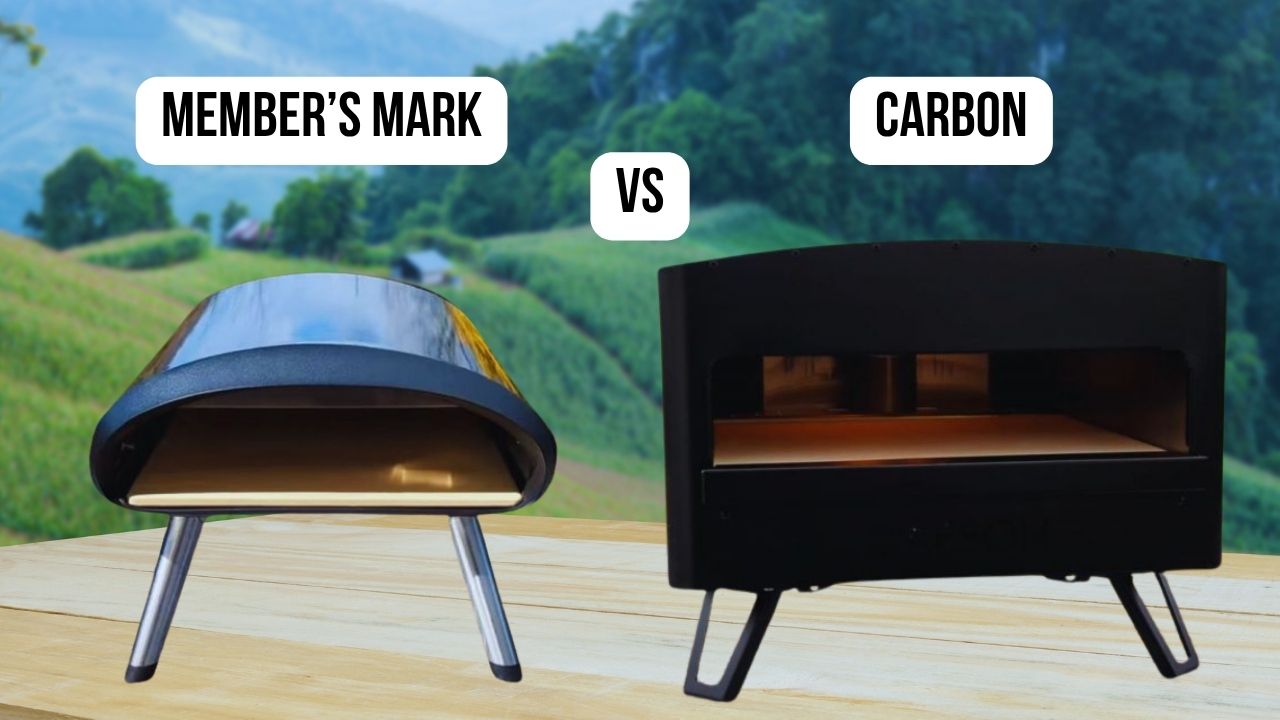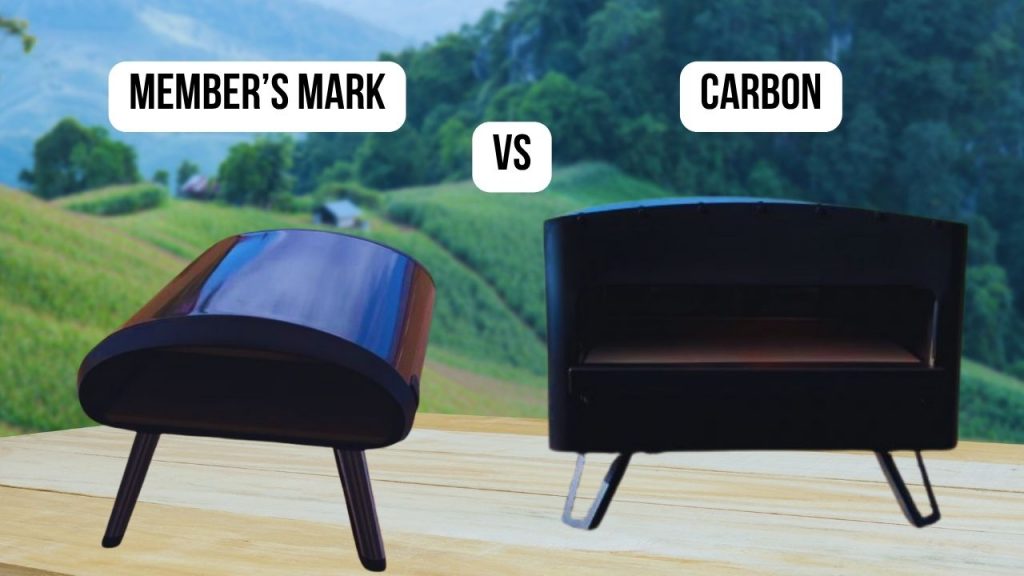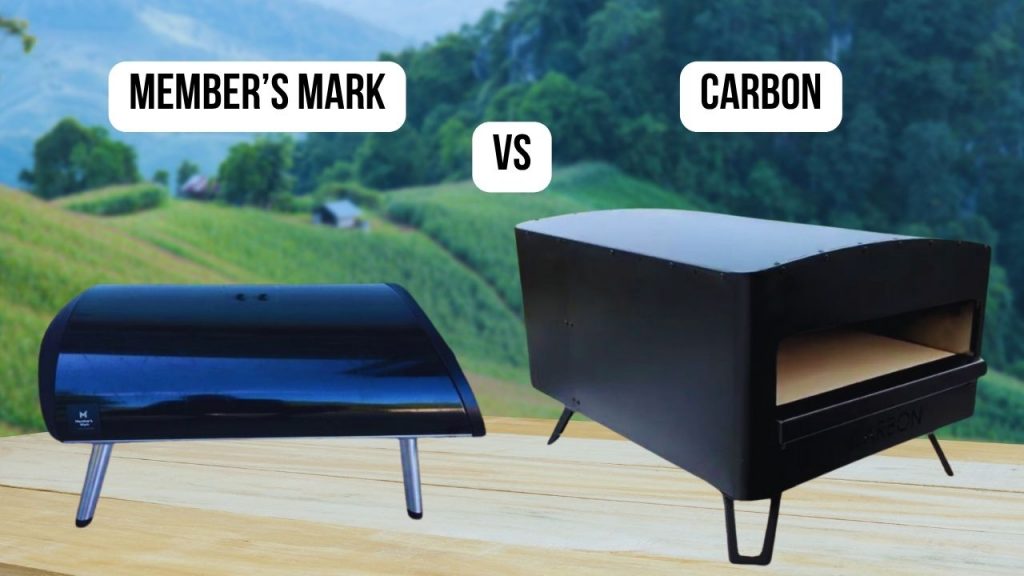I am a restaurant chef with over 10 years of experience working at my restaurant, Dequte Restaurant LironBoylston. In this article, I will compare the Member’s Mark Pizza Oven and the Carbon Pizza Oven, since I have used both extensively in my kitchen. I compared them across multiple criteria: quality and materials, temperature control, shape, first-time usage impressions, power source, size, ease of cleaning, and I also conducted a real pizza cooking test to see how long it takes to bake a classic Margherita pizza. If you’d like to see my thorough process for testing pizza ovens, you can check it out in my separate article.
The Member’s Mark Pizza Oven is a compact, gas-powered model known for its affordability and simplicity, while the Carbon Pizza Oven is designed to deliver professional-level heat and versatility for serious home pizza makers.
This article offers a comprehensive comparison of the Member’s Mark Pizza Oven and the Carbon Pizza Oven, based on my own testing experience.
As a final note, please be aware that I use referral links in this article. If you decide to purchase through them, it doesn’t cost you anything extra, but it helps me tremendously to keep this blog alive.
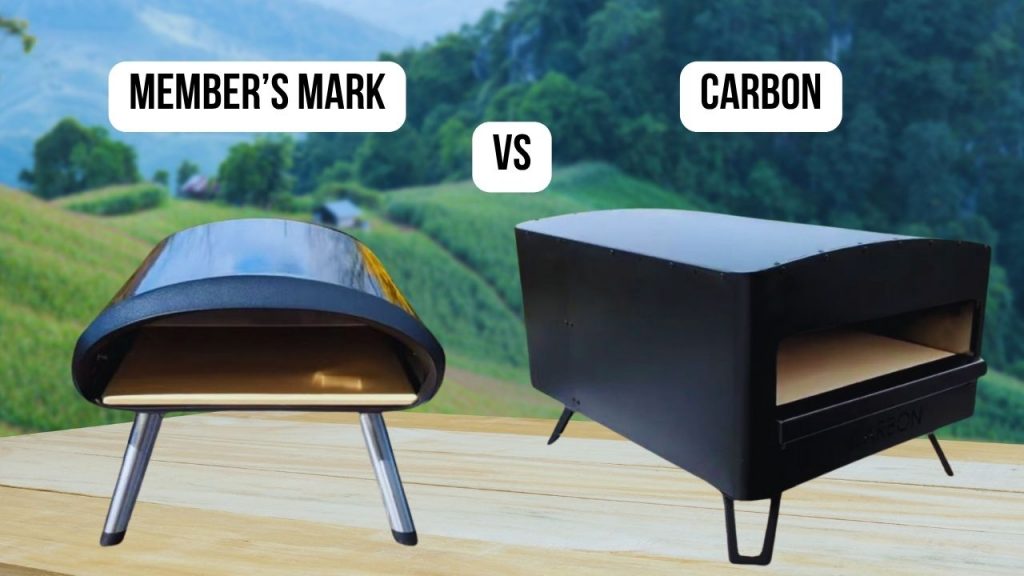
Member’s Mark VS Carbon: Quality and Materials
| The Member’s Mark Pizza Oven has a lightweight build with aluminum, stainless steel, and a cordierite stone. While the stone is thinner than some premium ovens, it still held up decently to repeated use and made nice crisp crusts. The overall design feels functional and surprisingly sturdy for the price, which makes it approachable for beginners. |
The Carbon Pizza Oven uses heavy-duty stainless steel and a 5/8” firebrick for excellent heat retention. The materials feel premium, and the black powder coating is sleek and modern. However, some users have noted small issues over time, such as wear around the seams and rivets, which you might expect in this price range.
|
Member’s Mark VS Carbon: Temperature Control
| Member’s Mark requires a bit of patience to preheat fully, and it doesn’t always hit the advertised 900°F, but you can still achieve a steady heat after about 30 minutes. It has a single burner and a simpler flame adjustment, which keeps things uncomplicated for casual cooks. |
The Carbon Pizza Oven shines in heat control with its separate upper and lower burners. You can fine-tune the flame precisely to get the stone temperature just right. This dual burner setup makes it easy to adjust quickly between lower heat bakes and ultra-high heat pizza sessions.
|
Member’s Mark VS Carbon: Shape
| Member’s Mark features a rounded dome that helps distribute heat evenly across the pizza. The shape isn’t flashy, but it contributes to a balanced bake and fits well on small patios or balconies. |
Carbon’s shape is more squared and compact, with a lower front opening (3.75”). This design traps heat efficiently but can feel a little cramped when maneuvering pizzas or larger dishes.
|
Member’s Mark VS Carbon: First-Time Usage Impressions
| The Member’s Mark Pizza Oven was easy to set up and operate out of the box. The assembly process was clear, and it didn’t feel intimidating, making it a good choice if you’re new to outdoor ovens. I appreciated the included peel and cutter. |
Carbon made a strong first impression with its stylish stamped logo and overall solid build. Setup was straightforward, but learning to juggle the two burner controls took a little practice to avoid scorching the crust.
|
Member’s Mark VS Carbon: Power Source
| Member’s Mark runs on propane gas and uses a single burner system. It’s simple and hassle-free—just connect the gas, ignite, and you’re ready. |
Carbon also uses propane (or natural gas) but adds the benefit of dual burners for more nuanced heat management. The propane setup is efficient and requires less tending compared to wood-fueled ovens.
|
Member’s Mark VS Carbon: Size
| The Member’s Mark is notably lighter and more compact at about 28 pounds, making it much easier to move or store. It’s a good fit for smaller spaces or anyone who prefers a less bulky oven. |
Carbon is heavier at 60 pounds and has a larger footprint. While the size is still manageable, it does make portability a bit trickier, especially if you plan to move it often.
|
Member’s Mark VS Carbon: Ease of Cleaning
| Cleaning the Member’s Mark Pizza Oven is uncomplicated—just wait for it to cool and wipe down the surfaces. The simpler interior means fewer nooks for ash or crumbs to hide. |
Carbon is also fairly easy to clean, thanks to the included brush and stainless steel surfaces. However, you’ll need to be more thorough around the burners and seams to keep buildup in check.
|
Pizza Cooking Test
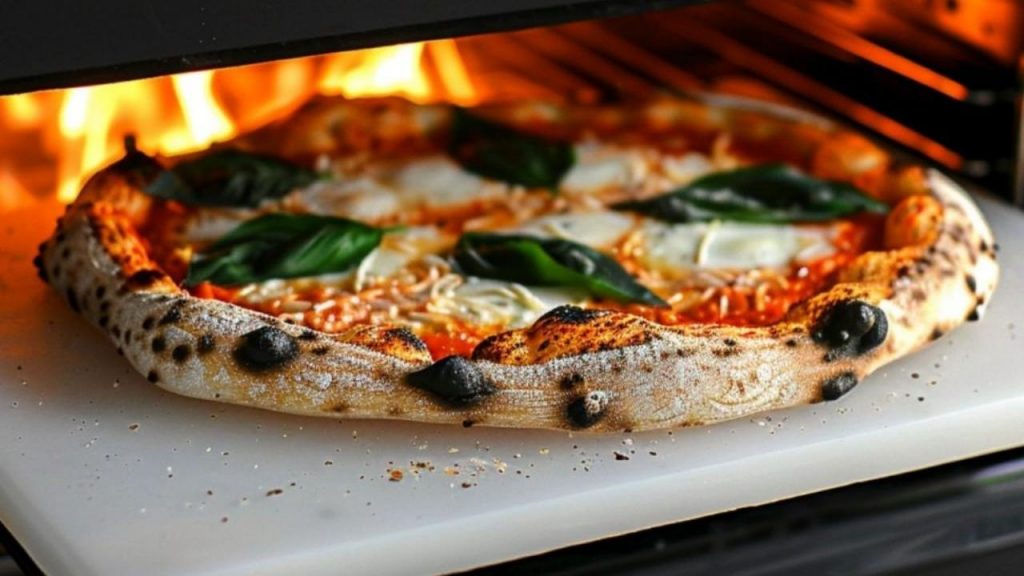
To see how each oven performed in real-world cooking, I ran the same Margherita pizza test with the Member’s Mark and Carbon pizza ovens.
The Member’s Mark Pizza Oven took about 30 minutes to preheat to what I’d consider a usable temperature. While it never quite reached the advertised 900°F, it was hot enough to bake effectively after some patience. Once preheated, each Margherita pizza needed about 5 to 7 minutes to cook through. The crust came out golden and pleasantly crisp on the bottom, and the toppings melted nicely. The flavor was quite satisfying, especially considering this oven’s affordable price.
The Carbon Pizza Oven heated up faster—within roughly 10 to 12 minutes, the stone had already passed 670°F. For the first pizza, I followed the manual’s suggestion to launch at that temperature, but the bottom crust was a little undercooked while the top was done. On my second attempt, I let the stone climb to about 740°F. This time, the pizza baked in about 80 seconds. The crust was beautifully browned, airy, and chewy with that classic Neapolitan char. The flavor was excellent, showcasing the Carbon’s capability to handle high-heat, fast bakes when properly preheated.
Overall, both ovens produced tasty pizzas, but they each had their learning curves. Member’s Mark rewarded patience with solid results, while Carbon delivered a quicker bake once I adjusted the timing and temperature.
How We Tested
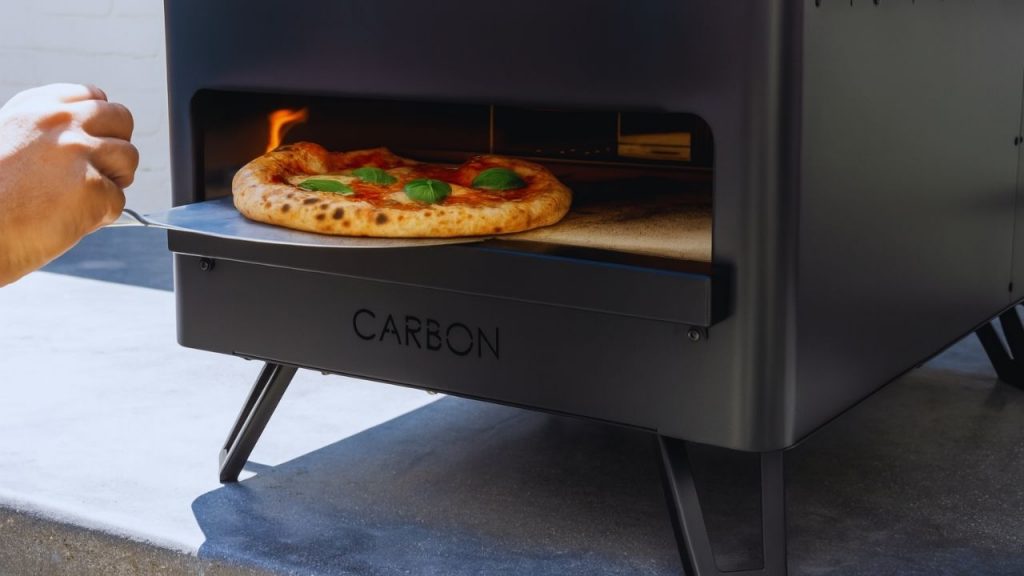
To ensure a fair and consistent comparison between the Member’s Mark Pizza Oven and the Carbon Pizza Oven, I followed the same procedure with both models. I used my standard homemade Neapolitan-style dough, portioned to the same weight, and prepared classic Margherita pizzas topped with crushed tomatoes, fresh mozzarella, and basil.
Each oven was preheated fully according to the manufacturer’s guidelines and confirmed with an infrared thermometer. I timed the heat-up duration, checked the stone temperatures at launch, and recorded the cooking times for each pizza. Between bakes, I allowed the ovens to recover to ensure back-to-back performance was comparable.
I also evaluated the ease of handling during cooking—such as rotating the pizzas, monitoring browning, and adjusting the heat levels. Finally, I judged the finished pizzas on crust texture, evenness of cook, and overall taste to get a clear sense of how each oven handled real-world use.
Conclusion
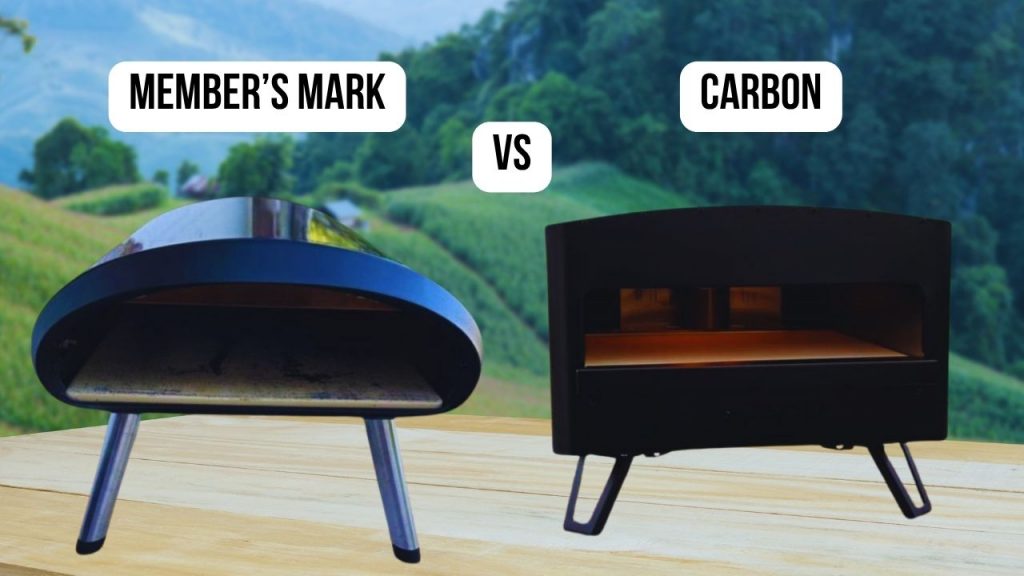
It’s ultimately your choice whether the Member’s Mark or the Carbon Pizza Oven is the better fit for your cooking style and budget. Both ovens have unique strengths, and I enjoyed testing them side by side. If you decide to buy one, I’d highly appreciate you using my referral links when purchasing. I’ll earn a small commission at no cost to you, which helps keep this blog alive and allows me to keep creating in-depth reviews. Here is the link for the Member’s Mark Pizza Oven and here is the link for the Carbon Pizza Oven.

